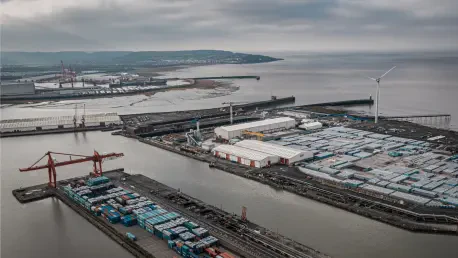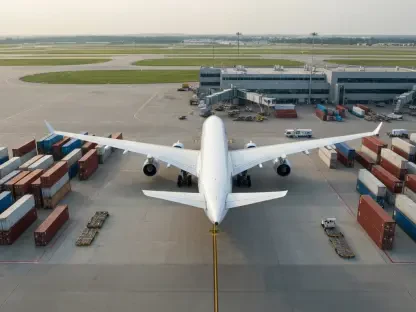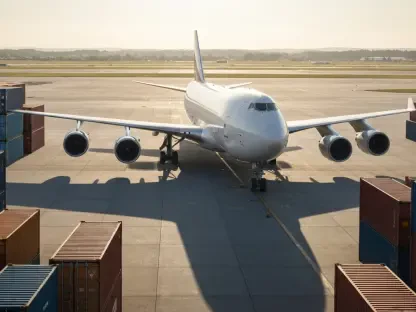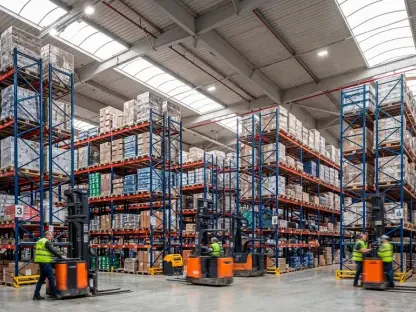Setting the Stage for a Border Trade Revolution
In the arid expanse of southeast Arizona, a monumental shift is brewing that could redefine the dynamics of U.S.-Mexico border commerce with a staggering $328 million investment in a new commercial port of entry in Douglas. Positioned 4.5 miles west of the existing Raul Hector Castro Land Port of Entry, this bold move signals an effort to address chronic congestion and catalyze economic growth. Spanning 80 acres, this facility is engineered for cargo inspections, promising to streamline the flow of goods, including oversized mining equipment and hazardous materials. This market analysis explores the transformative potential of this infrastructure project, dissecting its implications for trade efficiency, regional economies, and border security. The focus is on unpacking current trends, data-driven projections, and strategic insights for stakeholders navigating this evolving landscape.
Diving Deep into Market Trends and Projections
Infrastructure Upgrades Driving Trade Efficiency
The new Douglas port stands as a cornerstone for enhancing trade efficiency along a critical U.S.-Mexico corridor. With four northbound and two southbound inspection booths, 36 covered truck bays, and specialized zones for hazardous materials, the facility vastly outpaces the Castro port’s limited capacity of two booths and five bays. This upgrade, backed by the General Services Administration, targets a long-standing pain point: prolonged wait times that have cost businesses millions annually in delays. Data suggests that reducing inspection bottlenecks could boost throughput by over 30%, a game-changer for logistics firms operating in the region.
Beyond sheer capacity, the port’s 80-acre layout includes 176,000 square feet of office space and secure holding areas, facilitating smoother operations for federal and state agencies. However, challenges loom on the horizon, including construction timelines extending through fall 2028, which may delay full market benefits. Additionally, the need for skilled personnel to manage advanced systems could strain resources. Despite these hurdles, the infrastructure promises to position Douglas as a pivotal node in cross-border supply chains, attracting investment from transportation and warehousing sectors.
Security Enhancements Shaping Market Confidence
Security remains a linchpin in border trade markets, and the Douglas port is poised to redefine standards with cutting-edge inspection technologies and dedicated training facilities. Features like canine detection units and specialized cargo screening areas address vulnerabilities inherent in older ports, where space constraints often compromised thoroughness. Market analysts anticipate that enhanced security measures will bolster confidence among investors and businesses, particularly those handling high-risk goods, by minimizing disruptions from illicit activities.
The design also prioritizes safety for border communities by segregating hazardous materials, a factor that could reduce liability costs for firms. Yet, striking a balance between rigorous checks and maintaining trade flow is a persistent concern. If security protocols become overly stringent, they risk creating new bottlenecks, potentially offsetting efficiency gains. Market participants must monitor how federal agencies adapt policies to ensure that safety enhancements translate into trust without stifling commerce, a delicate equilibrium that will shape long-term market sentiment.
Economic Growth Catalyzing Regional Markets
Economically, the Douglas port is a catalyst for southeast Arizona, with ripple effects expected across multiple sectors. Local projections estimate hundreds of direct and indirect jobs tied to construction and post-completion operations, spanning logistics, manufacturing, and retail. Combined with a broader $600 million federal investment in border infrastructure, including upgrades to the Castro port, the initiative could elevate Douglas into a premier trade hub, drawing larger corporations to the area.
However, the economic boom carries risks of disparity. Smaller businesses may struggle to compete with incoming conglomerates, potentially skewing benefits toward bigger players. Market data also flags concerns about localized inflation in housing and services as demand surges. For regional markets to thrive inclusively, strategic planning is essential to distribute gains equitably, ensuring that the economic uplift strengthens the broader community fabric rather than creating isolated pockets of prosperity.
Future Market Dynamics and Trade Policies
Looking ahead, the Douglas port reflects a wider trend of modernization across U.S.-Mexico border facilities, driven by escalating trade volumes under agreements like the USMCA. Technological innovations, such as automated inspection systems, are expected to further streamline operations, potentially reducing costs for market players by 15-20% over the next decade. Arizona, with its strategic location, stands to capture a significant share of this growth, provided infrastructure keeps pace with demand.
Regulatory shifts pose a wildcard for market forecasts. Changes in trade policies or federal funding priorities could disrupt timelines for similar projects, affecting investor confidence. Additionally, geopolitical tensions might influence cross-border commerce patterns, necessitating adaptive strategies. Markets will likely see increased emphasis on resilience, with facilities like Douglas setting benchmarks for integrating economic and security objectives, a trend that could reshape border trade frameworks in the coming years.
Reflecting on Market Insights and Strategic Pathways
Looking back, the analysis of the $328 million Douglas port project illuminated its profound influence on trade efficiency, security confidence, and economic vitality in Arizona’s border region. It underscored how targeted infrastructure investments could address longstanding market frictions while spotlighting potential pitfalls like uneven growth and regulatory uncertainties. The examination revealed a market on the cusp of transformation, poised to redefine regional commerce.
For stakeholders, the path forward demands proactive engagement—businesses are encouraged to align expansion plans with the port’s phased rollout, leveraging anticipated efficiency gains. Policymakers need to prioritize workforce training and small business support to mitigate disparity risks. Communities must advocate for sustainable development to balance growth with livability. Collectively, these steps offer a roadmap to harness the port’s potential, ensuring that its legacy is one of inclusive prosperity and fortified market stability.









